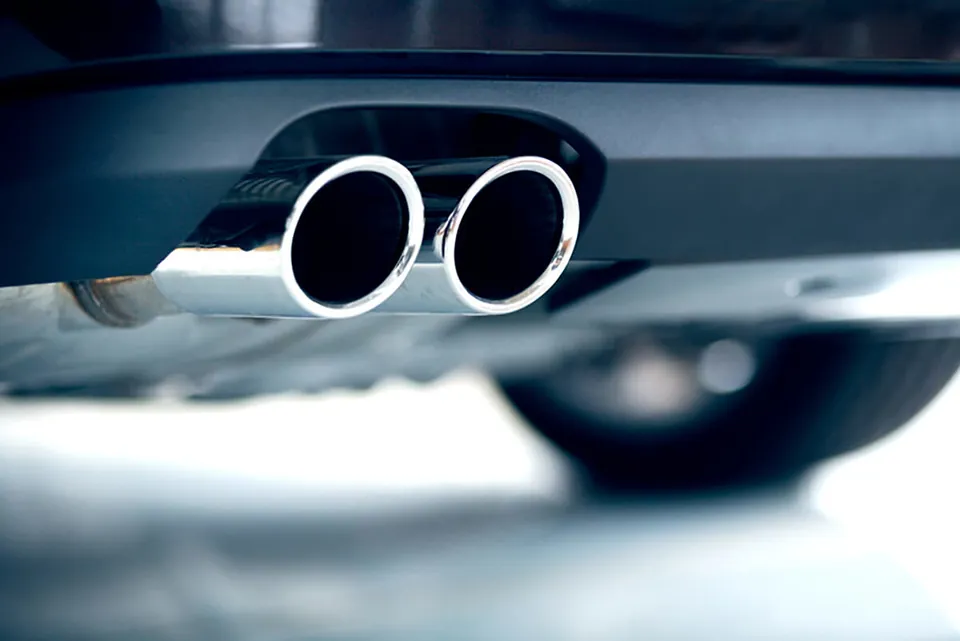Emissions regulations can be an exhausting topic, long before you get down to what comes out of the tail pipe. Unravelling EU legislation governing emissions, both present and future, takes some work, but understanding it is vital to van operators’ planning.
The first thing to note is that Euro emissions legislation does not include CO2 emissions in its calculations. While CO2 is an important consideration for governments and van users alike, it’s the other harmful chemicals that are measured.
From the outset of Euro1 in 1992, the measurements have covered oxides of nitrogen (NOx), hydrocarbons (HC), carbon monoxide (CO) and particulate matter (PM). Particulates are commonly referred to as soot and vans have wrongly shouldered much of the burden of disapproval of the stereotypical belching diesel exhaust.
As vans registered from 1 October 2006 have had to meet Euro 4 standards, they have been much cleaner, especially when you consider it takes 35 Euro 4-compliant vans to produce the same volume of particulates as one pre-Euro1 vehicle.
Every van registered from October 2009 onwards has had to meet the current Euro5 standard which states the max-imum limits of NOx that are permissible. This is set to change for Class 1 vans in September 2015 with the Euro6 standard. Class 2 and 3 vans have an extra 12 months’ grace before they have to comply with new NOx limits that are more than half the present limits.
Particulates and hydrocarbon limits will remain the same for Euro6 as they are for Euro5. While this offers some solace for van manufacturers, it still means finding solutions to lower NOx exhaust emissions. There is also the incentive of financial benefits from some governments for early adopters of cleaner vans to fleets.
Engineering a whole new engine is not practical for many van manufacturers, so we’re likely to see wider adoption of Ad Blue, also known as Diesel Exhaust Fluid (DEF), which works by Selective Catalytic Reduction. This process injects the DEF into the hot exhaust where ammonia in the liquid reacts with the harmful NOx to form nitrogen and water vapour that are safe to leave the exhaust.
This form of catalytic treatment is common in large trucks and some passenger cars. However, Simon Chapman, Chief Economist for the Freight Transport Association, warns: “Manufacturers are still likely to be in the development phase for these vehicles. However, if the FTA’s experience with trucks is anything to go by the solution of greater use of exhaust gas recirculation and selective catalytic reduction will result in higher vehicle purchase costs.’
For van operators, consideration needs to be given to future changes to the London Emission Zone (LEZ).
The LEZ, which covers almost the whole of the capital within the M25, already charges a penalty of £250 per day for any vehicle that does not meet its emissions standards.
Vans with a GVW below 3.5t that were registered after January 2002 are compliant with the existing Euro3 criteria, although vans above 3.5t have to meet Euro4 to be compliant. The fine doubles if not settled within 14 days.
Vehicle oeprators and owners must register their vehicle as being compliant. Compliant vehicles not registered with Transport for London will be fined.
While getting to grips with Euro emissions legislation can be difficult, it’s a subject worth grappling with as it affects all van operators and will have an ever larger part to play in how much it costs to buy and run a van.
By Alisdair Suttie


















T - 29/07/2014 10:30
"The London Low Emissions Zone (LEZ), which covers almost the whole of the capital within the M25, already charges a penalty of £250 per day for any vehicle that does not meet its emissions standards, which was set at Euro4 from January this year. The fine doubles if not settled within 14 days. It applies to all vans with a weight between 1.205 tonnes unladen and 3.5 tonnes gross vehicle weight." Who writes this drivel? Someone who cannot even be bothered to check their article and correct a massive stonking error. Euro4 does NOT apply to all vans with a weight between 1.205 tonnes unladen and 3.5 tonnes gross vehicle weight. Euro3 does. Terrible article unless meant to deceive on purpose and drive sales. Then just dishonest.